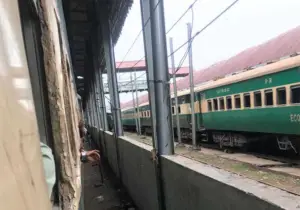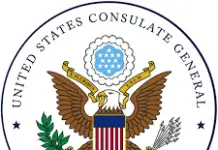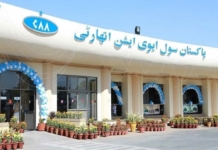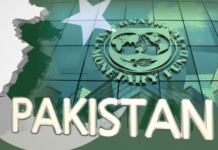After making a stay of around half an hour at Lahore Railway Station on Saturday, Allama Iqbal Express started swimming on the sea of dirt and garbage.
The 10-Down train operates between Sialkot and Karachi on main line-1 (ML-1).
Additional coaches were attached to it at Lahore station to cater to the rush of travellers a day before Eidul Azha. Smelly, dirty and in dilapidated condition, the economy class coach number 13 was not different from others. Vendors were selling nimko, bottled water, soda and egg and chicken burgers inside the coaches at costly rates. Passengers were freely smoking and consuming paan, gutka and niswar (chewing tobacco). Some were standing, few were lying on berths, and many were making arguments to get their desired seats.
From Lahore station to Walton station, heaps of dirt could be seen on both sides of the track. Illegally built on railways land, residential colonies were overlapping the 16-kilometre track between the two destinations before the train’s entrance into the less populated clean and green garrison area. But the scenery and tall red-colour buildings went out of view in one minute with the start of yet another filthy area. The railway stations of Raiwind, Kot Radha Kishan, Okara, Sahiwal, Chichawatni, Mian Channu and Khanewal were the repetition of old, tainted, smelly and dirty sights, perfectly narrating the overall situation of the Pakistan Railways (PR). Turned into a scrap and shelter of thieves, pickpockets and drug addicts, hundreds of coaches could be seen at every station yard on ML-1.

Posting an annual loss of around Rs40 billion to Rs50 billion to the national kitty, the public utility, which was once considered the backbone of the country’s economy, has almost collapsed. The number of its locomotives shrunk from 500 plus at the time of partition to less than 200 now. Its thousands of acres are under illegal occupation. A PR official told Minute Mirror that out of railways’ 167,690 acres land, some 50,000 acres were under the occupation of influential individuals and government departments. Some of the occupied land is worth billions of rupees due to their commercial value, he said. The colonial legacy covered the distance from climax to chaos in 74 years.
Former railways minister Azam Khan Swati had told reporters last year that the PR suffered an accumulated loss of Rs1.2 trillion in the last 50 years and almost 90 percent of these losses were added after year 2000. The Supreme Court of Pakistan under former chief justices and national assembly and senate committees made frequent efforts to fix the problems but could not succeed. The former and incumbent governments remained clueless how to put the system on track. The only option they had in mind was the privatization of the public utility. Railways’ 70,000 employees, however, are the main hurdle in the way. The railways paid whopping Rs31.42 billion to pensioners and over Rs28 billion to its employees last year, according to the PR annual report.
“Privatization is not a solution to the problems. The PR could gain its past glory if the government shows seriousness. We have the same railways as in our neighbourhood in India. We have to think about it why our venture has failed and India’s is thriving,” said Railways PREM Union President Sheikh Anwar.

Apart from privatization options, the government has recently started looking towards China for the revival of the PR. It believes the upgradation of ML-1 with around $7 billion could pump the fresh air in the lungs of the dying patient. PR Minister Khawaja Saad Rafique has recently criticized the former government of the PTI for not making any progress on ML-1 in past three and half years, vowing to restart negotiations with the Chinese government with some new ideas. Chinese, on the other side, are concerned about the security situation in Pakistan. Some recent reports stated the government had given full assurance of protection to Chinese friends working on different projects in Pakistan. The PR management believes the railways would no longer remain a loss-making entity once the CPEC flagship ML-1 project is completed.
Travelling from Lahore to Bahawalpur on Allama Iqbal Express, a passenger, Muhammad Shakeel, paid Rs650 for economy class seat as against the AC bus fare of Rs2,000. He is a government employee who believes in travelling on train as compared to bus. “It is cheap and affordable to me and I always prefer to pick a train over bus particularly when I go to my hometown with family,” Shakeel said.







